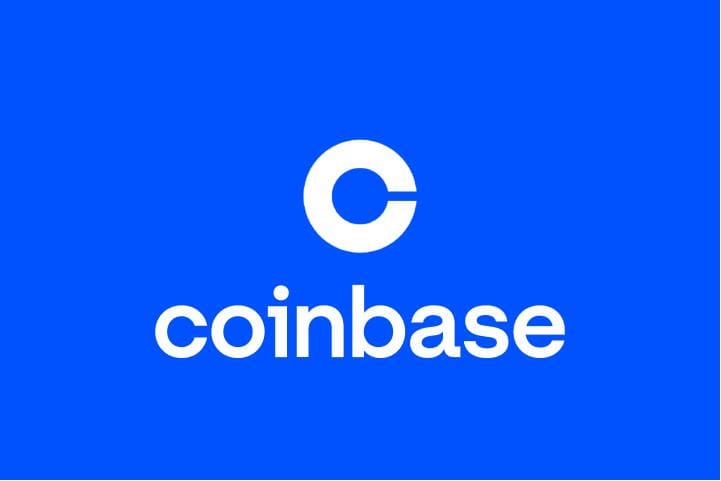Table of Contents
The financial world is going through an overwhelming financial revolution as every global business discourse has had a paradigm shift towards digitization. In digital financing which cryptocurrency is representative of, crypto investors are opting for investments that would bring them a huge return of investment (ROI) from the modulus of the decentralized digital currency.
With the growing interest and concluded decision, the cryptocurrency market is featured of pockets of cryptocurrencies and crypto exchanges that rollover to thousands. However, these exchange platforms are nuanced by the features and services they provide. Amongst all these exchange platforms are Binance and Coinbase which are the giant crypto trading platforms in the world.
Binance and Coinbase offer an array of services which include payment services, staking, peer-to-peer transactions, institutional services, etc. The two exchange platforms have differences designed to topple the performance of the other, albeit their basic features are similar.
For instance, Binance is believed by crypto experts to be best used by individuals who are adept in handling different trading tools and account features. Conversely, Coinbase is exclusively designed for beginners as the crypto newbies could easily handle some basic features of crypto trading and transaction.
Here, we will elucidate the differences between Binance and Coinbase to establish facts on the best cryptocurrency exchange to go for.
What is Binance?

Binance is a crypto-to-crypto platform that connects buyers to users and was founded in 2017. The platform allows users to buy and sell a wide range of cryptocurrencies and also offer other services such as spot, derivatives trading, margins, NFT trading, staking, etc. Binance connects buyers to sellers for cryptocurrency trading and also has its own coin known as Binance Coin (BNB).
Binance is the biggest cryptocurrency exchange platform in the world and even though Coinbase is older, I heard of Binance first and it was the first crypto platform I ever used.
What is Coinbase?

Coinbase was founded in 2012. This U.S based crypto exchange acts as a broker and buys cryptocurrencies for its customers, unlike Binance which connects buyers and sellers. Coinbase is the biggest broker exchange in the world and they are known for their strict adherence to government regulations and they have a user-friendly interface that makes trading easy for users. Coinbase also offers several services such as spot trading, custody, staking, and institutional solutions.
Binance vs Coinbase: Features
1. Trading Fees
Binance is more affordable when it comes to trading fees. The platform offers low fees for crypto trading, charging only 0.1% for spot trading. In the U.S, Binance offers zero-fee on Bitcoin trading while they charge between 0.1% to 0.6% when you trade other assets. Binance market fees are also highly competitive, starting at as little as 0.02% and taker fees starting at just 0.05%. Another interesting thing about Binance’s trading fees is that they can be reduced further depending on your VIP levels or by paying with BNB-Binance’s token.
On the other hand, Coinbase’s fees are higher than that of Binance. The platform charges 0.4% marker fees and 0.6% taker fees on its advanced platform, which is significantly higher than what Binance charges.
Coinbase’s trading fees usually vary depending on the volume of your trade. Coinbase’s simple platform also charges high fees from transactions although this depends on the volume of trade as well. Coinbase charges $0.99 for transactions of up to $10 while users pay $1.49 for transactions between $10 and $25, $1.99 for transactions between $25 and $50 and $2.99 for transactions between $50 and $200.
2. Security and Regulatory Compliance
Binance isn’t as highly regulated as Coinbase is. Despite this, the platform still has high-end security features such as multi-factor authentication, AI-driven risk management, withdrawal whitelist and Secure Asset Find for Users (SAFU) which protects users in extreme situations to the tune of $1 billion. Binance.US is registered with the Financial Crimes Enforcement Network (FinCEN) in the U.S. and follows local compliance requirements.
Coinbase is regulated by the United States authorities and operates in accordance with government laws. The platform holds valid licences in several states and is one of the most heavily regulated crypto exchange platforms. As a publicly traded company, Coinbase holds 1:1 customer funds and provides FDIC insured ce for deposits of up to $250,000. Coinbase mobile app is protected with biometric security and they store 98% of users crypto currency funds in cold storage to safeguard it from online threats.
3. Cryptocurrencies Supported
Binance supports over 400 cryptocurrencies. In the U.S alone, users can trade up to 150 cryptocurrencies. This platform is the best exchange for niche market participants like NFT-related tokens, Decentralised Finance (DeFi) tokens, and other assets. This makes it the preferred choice of users who love cutting-edge blockchain projects.
However, Coinbase caters mostly to mainstream crypto transfers and supports more than 240 cryptocurrencies. Nevertheless, it still offers a great option for niche markets. The platform also provides a simpler approach to trading and users who prefer highly regulated platforms will definitely love Coinbase.
4. Staking
Users have several options for earning rewards on Binance by staking more than 60 different cryptocurrencies. In addition, Binance charges no fees on staking rewards, but a 30% commission applies to users in the US who can stake up to 21 cryptocurrencies.
Coinbase supports only a handful of staking coins, such as Ethereum (ETH) and Solana (SOL). Coinbase charges high fees for staking, with a 25% fee for Ethereum staking rewards and 35% for Solana. These higher cuts reduce the actual earnings for users.
5. Tax
Binance offers a free Tax Reporting Tool designed to help users calculate their tax obligations and create the necessary reports. It can handle up to 100,000 transactions and also supports integration with third-party tax software via API keys, allowing automatic syncing of transaction data.
On the other hand, Coinbase offers tax tools mainly for U.S. users to simplify crypto tax management. If you earn over $600 from staking or rewards, Coinbase sends out Form 1099-MISC and reports it to both you and the IRS. For futures trades, it issues Form 1099-B. The platform also creates gain/loss summaries that show your taxable activities. These can be imported directly into tax programs like TurboTax.
6. User Interface & Experience
Binance is built for traders who want more control, offering a detailed, feature-packed dashboard. Its main view includes advanced charts, multiple trading pairs, and in-depth market data. While a “Lite” mode exists for beginners, the full version can feel overwhelming for anyone new to crypto trading.
Coinbase focuses on simplicity. The platform is simple and easy to use, making buying, selling, and managing crypto straightforward. The layout is minimal, with smooth navigation and step-by-step guidance that suits new users. Its mobile app follows the same design pattern, offering a great way to trade and monitor your portfolio without unnecessary difficulty.
Comparison Table of Binance vs Coinbase
| Binance | Coinbase | |
| Founded | 2017 | 2012 |
| Supported cryptocurrencies | Over 400 | Over 240 |
| User base | More than 230m verified users | More than 110m verified users |
| Futures trading leverage | Up to 125x | Up to 10x (selected users only) |
| Trading fees | 0.1% maker/taker | 0.4% maker and 0.6% taker |
| Staking | Flexible and fixed-term staking with higher APYs | Flexible staking |
| Security features | Multi-factor authentication; $1 billion Secure Asset Fund | 98% of assets in cold storage; FDIC insurance |
| Payment methods | Crypto deposits, bank transfers, credit/debit cards | ACH, wire transfer, Credit/debit cards, bank transfers |
| Withdrawal limits | $8 Million for KYC-1 users | $100,000 per day |
| Advanced trading features | Margin trading, futures, options, and automated bots | Limited; basic options like advanced charting |
| Customer service | 24/7 support via chat, email, and extensive resources | 24/7 support via chat and email |
Frequently Asked Questions (FAQs) on Binance vs Coinbase
Is Binance safer than Coinbase?
Both exchanges are generally safe to use, but Binance gives users an extra layer of transparency by letting them verify proof of reserves at any time.
Is Coinbase better than Binance?
Coinbase is generally the better platform for U.S residents due to regulatory clarity and ease of use. For most other regions, Binance offers more features, better fees, and a wider selection, making it the stronger overall option.
Is Coinbase cheaper than Binance?
No. Coinbase has much higher fees than Binance, which makes it less appealing for frequent or high-volume traders.
Is Binance still safe?
Yes, Binance continues to rank among the safest major crypto exchanges, holding verifiable reserves that exceed client balances. However, it has faced legal action over money laundering, operating without proper licenses, and sanctions violations.
Conclusion
Binance and Coinbase are two of the best cryptocurrency exchanges in the world, but they serve different types of users. Binance offers lower fees, more trading pairs, and advanced trading tools- making it ideal for active traders and those outside the U.S. Coinbase, on the other hand, focuses on simplicity, strong regulatory compliance, and a beginner-friendly experience that makes it better for newcomers and U.S-based users. The best choice comes down to your needs: if you want variety, and cost efficiency, then Binance is your best bet. But if safety and ease of use is your main priority, the Coinbase may be the better fit for you.
Last updated on September 5, 2025

